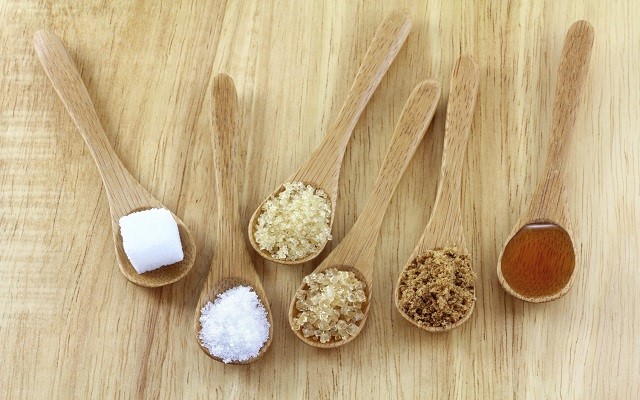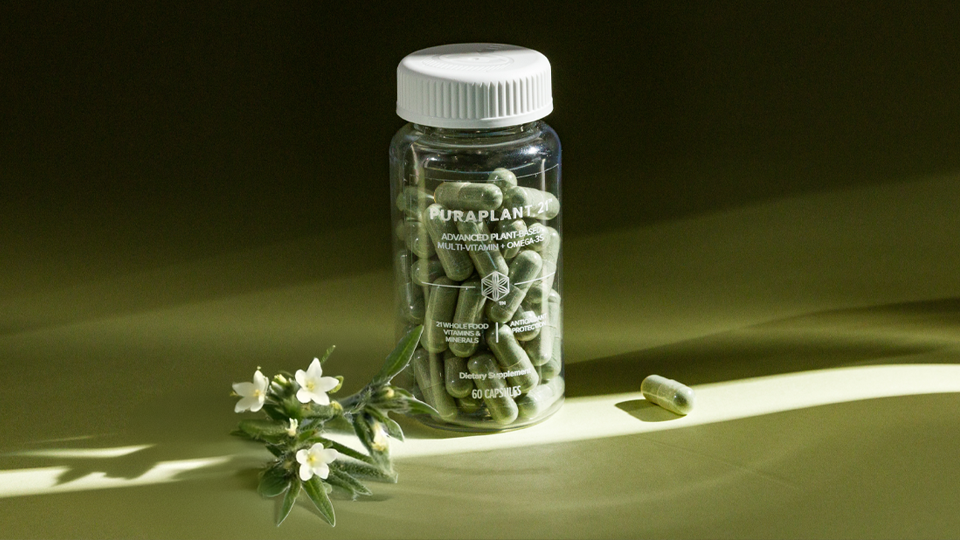When you look at ingredient labels of Isagenix products, you’ll probably notice that some of them include small amounts of sugar. These might occur in different forms or a combination of forms, including dextrose, sucrose, fructose, honey, molasses, and agave syrup—the total of which never exceeds the amount of a medium-sized apple.
Regardless, we know that a few of you might have questions about the overall use of different sources of sugar in Isagenix products. So our Research and Science Team has chosen to respond to some of the most frequently asked questions about sugar collected from our Ask the Nutritionist booth at Isagenix Celebration 2015.
Isn’t that sweet? After reading these top 10 questions about sugar and their answers, we hope you’ll agree that the use of different sources of sugar wherever they occur serve to provide energy, replenishment, and/or sweetness without having to resort to non-nutritive or artificial sweeteners.
Cutting high quantities of sugar out of your diet could be one of the most important decisions for your health. As it happens, Isagenix can help you in reaching your goal through smart and purposeful use of sugar in our products.
1. I’m trying to limit my intake of sugar and carbohydrates. Should I use Isagenix products?
Yes. Most people who use Isagenix products actually reduce their sugar intake significantly. A typical American (who eats on average 120 grams of sugar per day) who switches to an Isagenix plan (that includes two IsaLean® Shakes, an IsaLean Bar, Ionix® Supreme, Replenish™, and e+™ shot daily) reduces his or her intake of sugar by as much as two thirds. That’s quite a big difference – and a lot of calories saved from becoming part of your waistline.
2. Isn’t any amount of sugar consumed harmful?
Sugars are naturally found in many foods that contribute to a healthy diet – fruits, vegetables, dairy, and grains. Plus, all carbohydrates – whether they come from fruits, vegetables, or grain products like pasta – are all broken down to simple sugars before being absorbed into the body.
Moreover, every cell in your body requires sugar in the form of glucose for its basic metabolism. Sugar is also the preferred fuel of multiple body systems. These include the brain, the nervous system, and the immune system (1, 2).
So sugar itself isn’t inherently harmful to the body. You also shouldn’t cut sugar completely out of your diet. But you can still get too much overall or at any one time! The key is to balance the use of controlled amounts of sugar to help you achieve a healthy diet rich in other nutrients such as protein, fiber, vitamins, and minerals.
In fact, sugar can be quite useful for delivering sweetness without resorting to use of non-nutritive or artificial sweeteners. In reality, sugar only becomes harmful when it’s supplied in excess amounts (think sugary sodas and sweet desserts), or when it’s supplied in amounts out of balance with other nutrients that lead to spikes in blood sugar or weight gain.
3. I’m trying to watch my blood sugar. Should I use IsaLean Shakes, Soups, and Bars?
Yes, these can be valuable meal alternatives for supporting blood sugar control. Our IsaLean Shakes, Bars, and Soup meal replacement products are all sent out to third-party laboratories to properly test for glycemic response. For those who prefer to have a meal alternative that is yet lower in total sugar and carbohydrates, we also offer IsaLean PRO Shake as a meal alternative.
4. Why not use a non-nutritive sweetener (e.g. stevia) in IsaLean Shakes, Soups, and Bars?
Remember that any meal consumed, even the healthiest homemade meal made up of only whole foods, would contribute grams of sugar that would be noticeable if a nutrition label came attached.
Because IsaLean products are designed to be full meal replacements, they are formulated to contain some carbohydrate and sugar as appropriate. But the total amounts are generally lower in comparison to what’s found in typical meals while also offering balanced amounts of quality protein, good fats, fiber, vitamins, and minerals.
Nutrient density is the goal, as opposed to energy density—it’s the difference between empty calories and smart nutrition.
5. Why is fructose used as a source of sugar in IsaLean Shake and other products?
Fructose is naturally found in nearly all fruits and vegetables and differs from other sources of simple sugar because it is low glycemic, helping to support against blood sugar spikes. In addition, it’s a little sweeter than other sources of sugar, so it allows for less use of sugar overall. In fact, the total amount of fructose included in IsaLean Shake is less than what’s found in half of a medium-sized apple or orange.
6. I heard fructose is harmful to health. Is this true?
As with any kind of sugar, too much fructose such as in the form of sugary drinks can indeed be harmful to your health (3). However, while studies have shown that fructose in excess may lead to weight gain, including both subcutaneous and visceral fat, the research suggests it is not necessarily any more fattening than other sources of sugar or carbohydrate sources (4,5).
When fructose is present in smaller amounts in meals, well-designed controlled studies have also shown that it can be more supportive than other sources of carbohydrate for helping to maintain blood sugar control (4, 5).
So in controlled amounts as part of a calorie-restricted regimen such as your Isagenix system, fructose serves to help maintain blood sugar control and is burned up as energy—not stored as fat—supporting overall health and weight loss goals.
7. Why do you have sugar in Cleanse for Life?
Cleanse for Life® has a little sugar in the form of fructose (again, less than half of what is found in a medium-sized apple) to help maintain blood sugar control on Cleanse Days and fuel body systems such as the brain and nervous system.
8. I’m concerned about sugar alcohols. Why are they used in combination with sugar in IsaLean Bars and FiberSnacks?
In IsaLean Bars and FiberSnacks, sugar alcohols assist in providing sweetness while helping maintain a lower glycemic and caloric profile. The sugar alcohols also help retain moisture in these products to keep them from hardening due to their high content of protein.
Sugar alcohols are naturally found in many kinds of fruits and vegetables. They are often used in sugar-free candies and desserts because they are low-glycemic and provide fewer calories per gram as compared to regular sugar.
Because sugar alcohols are fermentable in the gut, however, eating too much of some kinds of sugar alcohols can cause gastrointestinal distress in sensitive individuals. For this reason, they’re used only in combination with other sugar sources and never as a sole nutritive sweetener.
9. Why is there sugar in e+, Replenish, and new AMPED Power?
A little sugar is included in these products to supply quick energy to fuel activity, boost athletic performance, and replenish muscle glycogen sources – so that you can run faster, jump higher, and lift more for longer time periods.
In fact, most athletes understand that sugar is a quick source of energy that is preferentially used for fueling fast, quick movements. It’s also key for fueling endurance and the immune system in order to stay well.
Thus, e+, Replenish, and AMPED Power are really only supplying sugar in the healthiest way possible – to get you to exercise more often, keep you exercising longer per session, and boost your performance gains. All good things!
10. Should I be concerned about sugar at all in Isagenix products?
Here’s the short and sweet of It: There’s really no reason to be afraid of sugar in Isagenix products because it’s used in ways that are strategic and smart: You end up receiving less total amounts of sugar while still getting just enough to provide sweetness in nutrient-dense (as opposed to energy dense) meals, and to fuel the brain and body systems on Cleanse Days, as well as physical activity every day.
You can also use any number of Isagenix products to help swap out other common sources of large sugar amounts, such as sugary smoothies, typical snacks like candy bars, and sugary drinks, and to help to improve your diet and lifestyle.
References
- Fehm HL, Kern W, Peters A. The selfish brain: competition for energy resources. Prog Brain Res.2006;153:129-40.
- Wolowczuk I, Verwaerde C, Vilitart O, Delanyoe A, Delacre M, Pot B, Grangette C. Feeding Our Immune System: Impact on Metabolism. Clin Dev Immunol. 2008, 2008: 639803.
- Cassady BA, Considine RV, Mattes RD. Beverage consumption, appetite, and energy intake: what did you expect? Am J Clin Nutr. 2012.
- Tappy L, KA L. Metabolic effects of fructose and the worldwide increase in obesity. Physiol Rev. 2010 Jan;90(1):23-46.
- Cozma AI et al. Effect of Fructose on Glycemic Control in Diabetes: A Systematic Review and Meta-analysis of Controlled Feeding Trials. Diabetes Care 2012;35:1-10
- Rodriguez NR, Di Marco NM, Langley S. American College of Sports Medicine position stand. Nutrition and athletic performance. Med Sci Sports Exerc. 2009 Mar;41(3):709-31.





